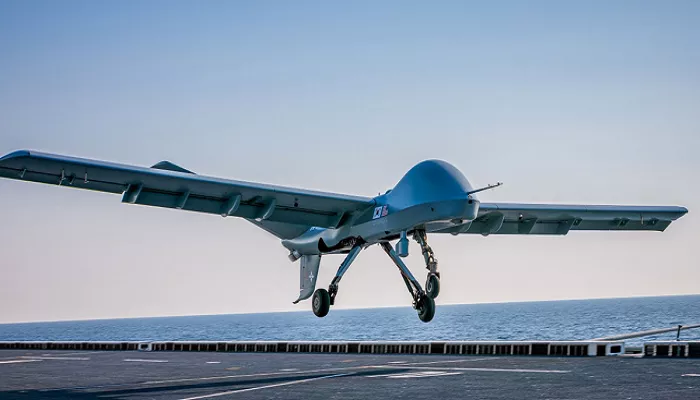South Korea’s Hanwha Aerospace has teamed up with US drone manufacturer General Atomics Aeronautical Systems (GA-ASI) to develop and produce advanced military drones for international markets.
The partnership aims to create a strong unmanned aircraft system (UAS) ecosystem in both countries, boosting the production and capabilities of GA-ASI’s Gray Eagle short take-off and landing (GE-STOL) UAS. The collaboration follows the successful flight demonstration of the GE-STOL from a South Korean warship and its landing at the Pohang Navy Airfield in November 2024, marking a significant step in supporting multi-domain operations.
“We’re excited to extend and deepen our business relationship with Hanwha,” said Linden Blue, CEO of GA-ASI, who oversaw the demonstration. “The Republic of Korea Navy received our test flight with Gray Eagle STOL very positively, and we know Hanwha is committed to investing in UAS development in both Korea and the US.”
Hanwha will contribute more than 750 billion Korean won (approximately $517 million) to the initiative, complementing GA-ASI’s investment in the GE-STOL UAS development. This funding will support production facilities for the GE-STOL and its engines, expand research and development efforts, enhance production infrastructure, and foster partnerships with domestic UAS companies.
The GE-STOL, previously known as the Mojave demonstrator platform, is designed for various missions, such as armed reconnaissance and advanced teaming with air-launched effects. It can carry up to 1.6 tons of payload and operate from short or unimproved surfaces.
Hanwha and GA-ASI are planning additional flight tests for the GE-STOL in 2027. With expansion plans in the US, Asia, the Middle East, and Europe, GA-ASI expects demand for over 600 units in the next decade, as reported by Chosun Daily.
“Hanwha Aerospace views unmanned systems as a key part of future defense,” said Dong Kwan Kim, Vice Chairman of Hanwha Group. “Through this partnership with GA-ASI, we aim to enhance South Korea’s sovereign defense capabilities, increase its presence in the global UAS market, and strengthen the South Korea-US alliance.”


